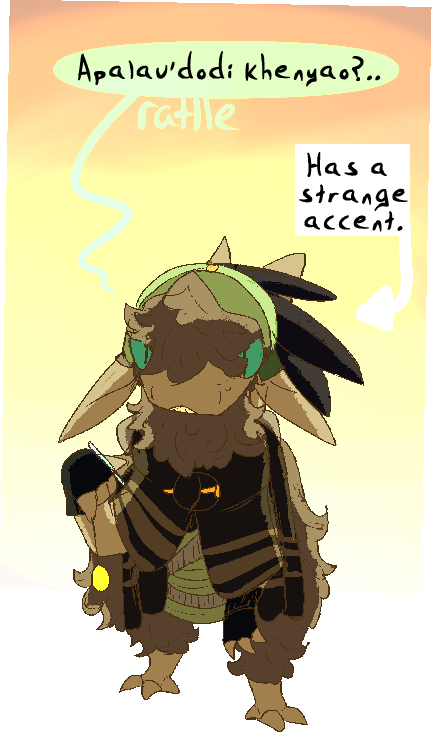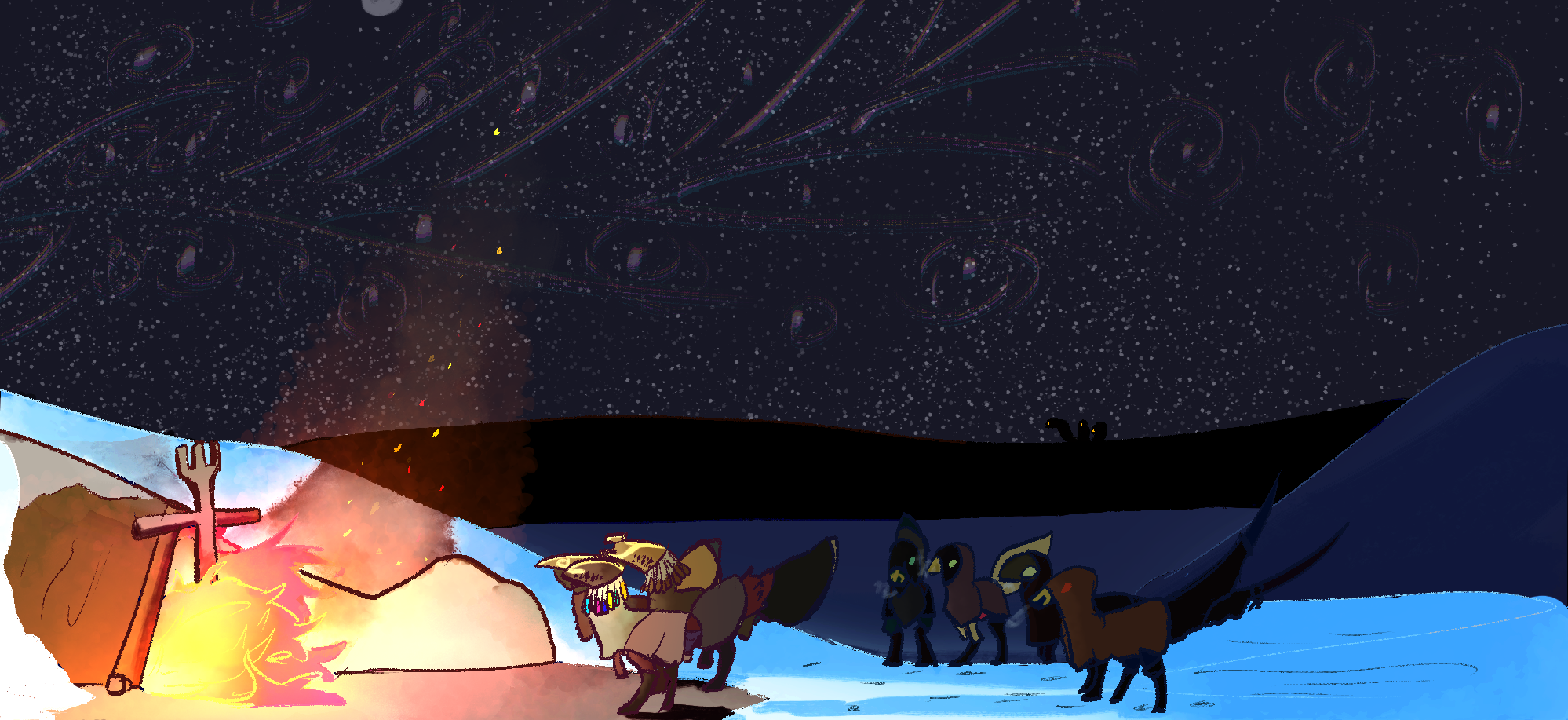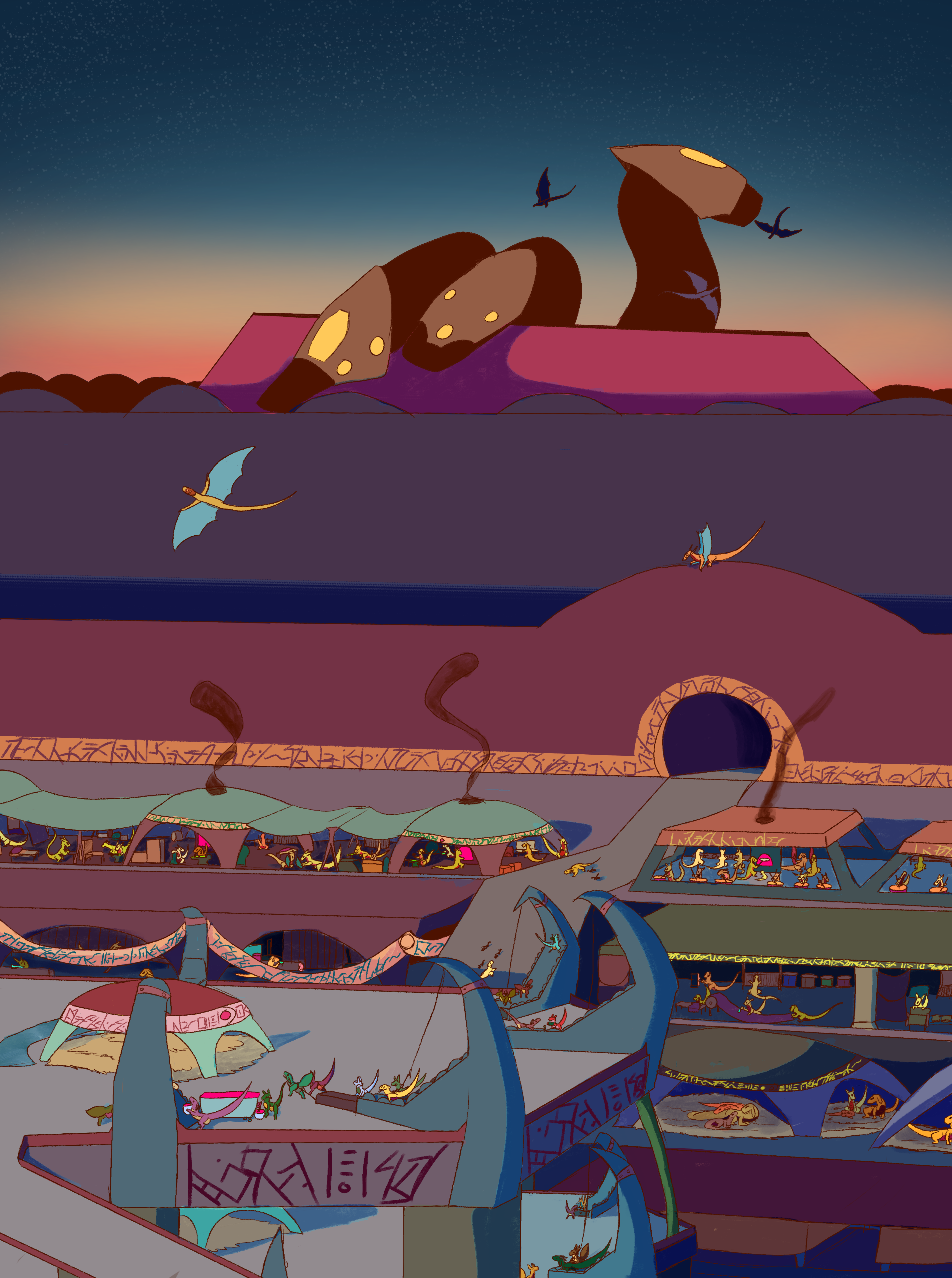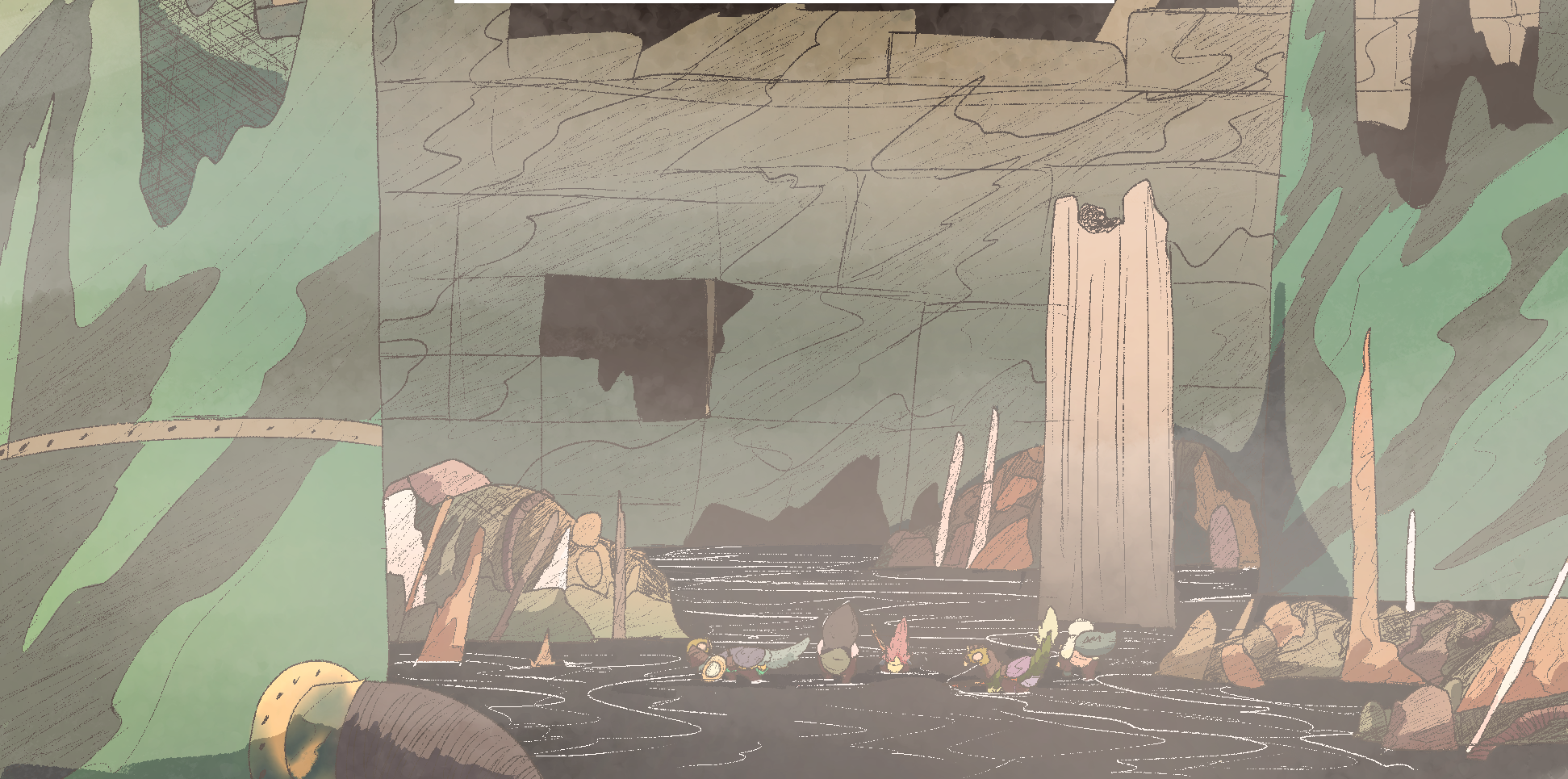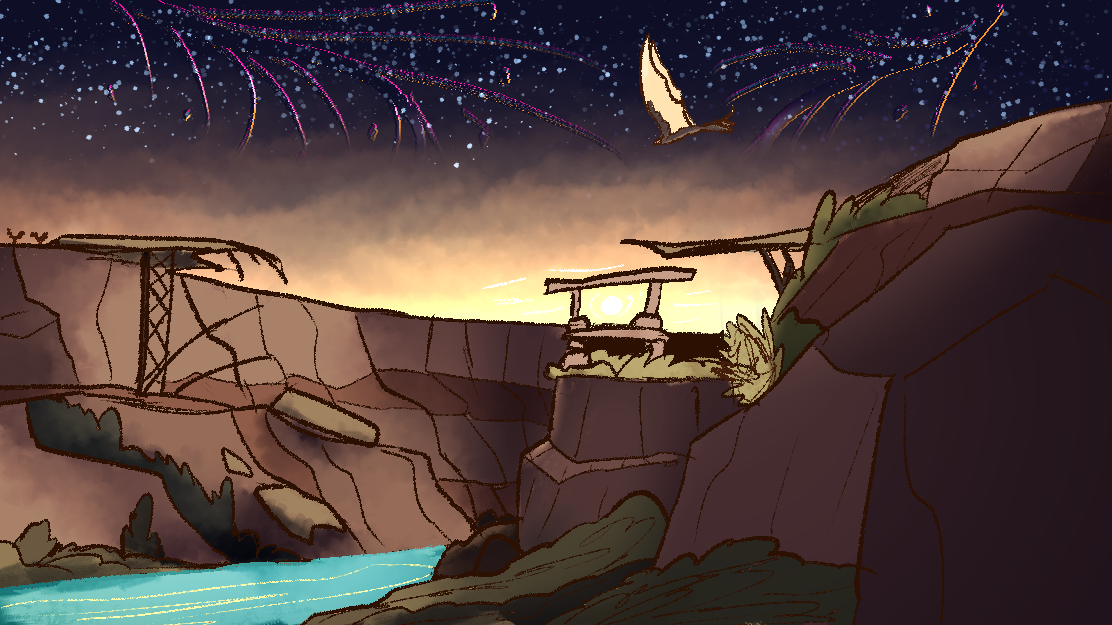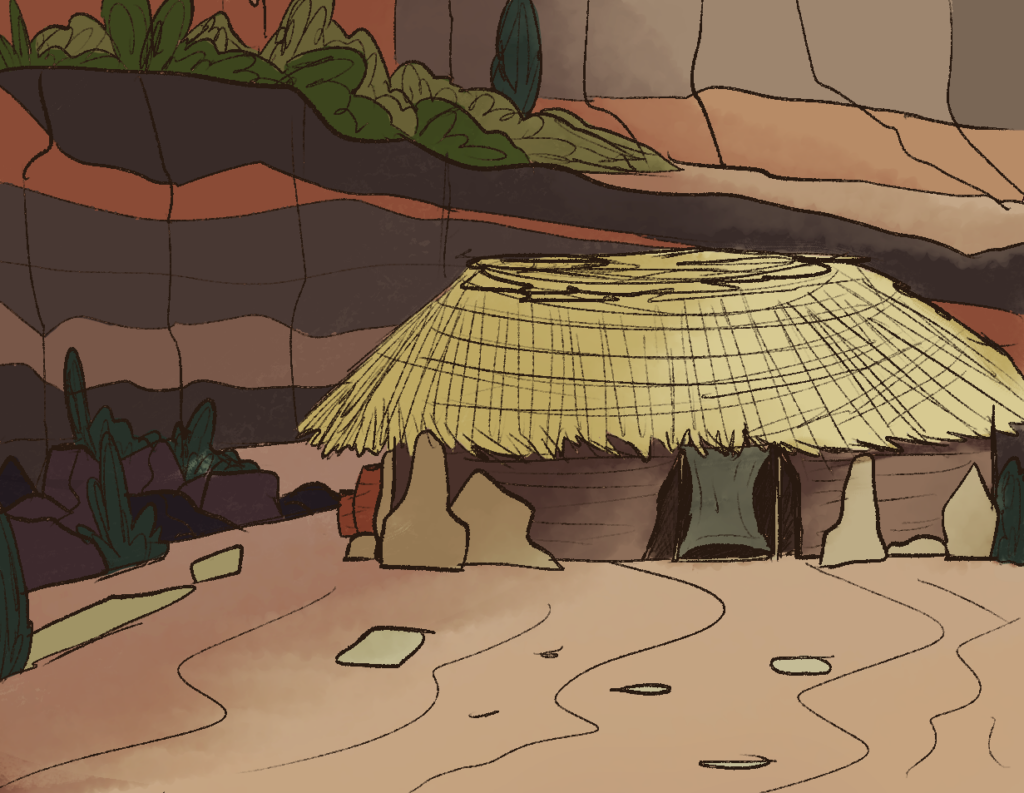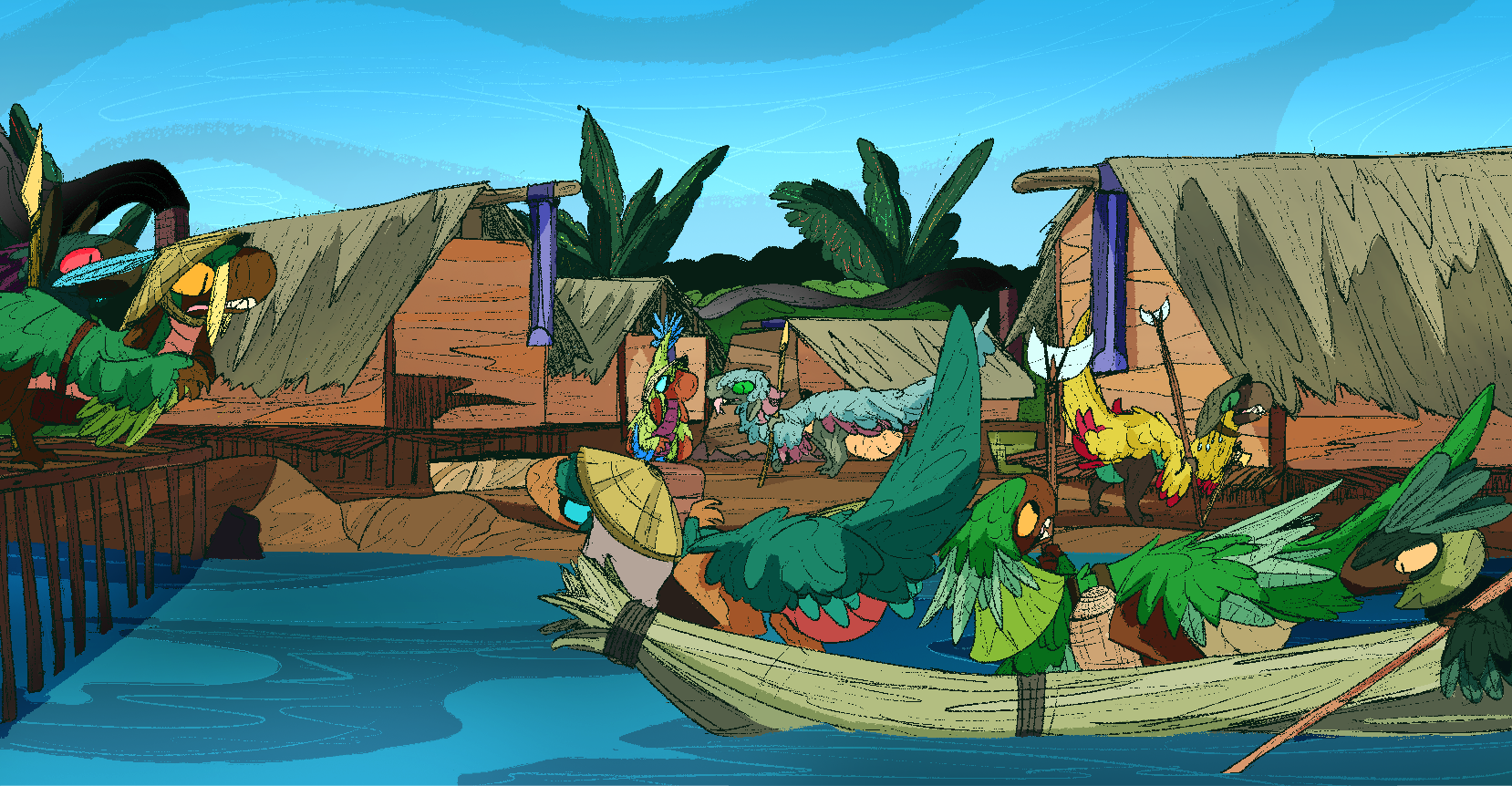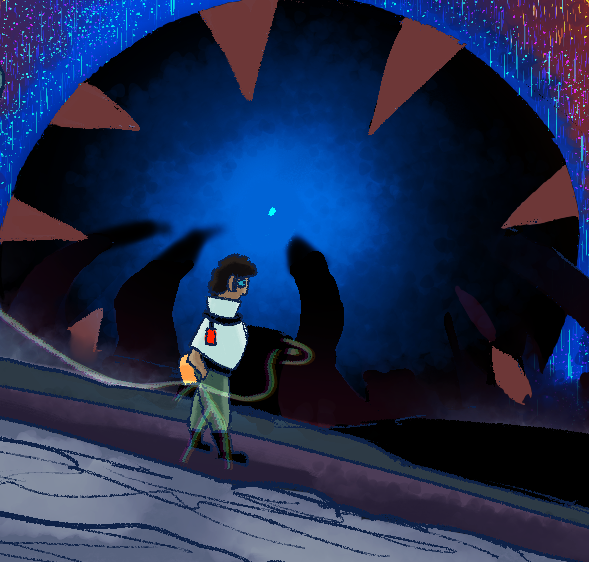Anatomy, Biology, and Diet
Rapsar are a native õndemic species, with no earth life mutating nor õndemifying into them. Therefore rapsar are not common in the American plana of Suyu, but are found in many other planar, sometimes in great amounts. They are common herd animals particularly on Logáu in which many cultures have built their lives around the domestication and herding of Rapsar, raising them for their meat and eggs,

Rapsar are dedicated herbivorous serpents that are known to slither together in close proximity to eachother, forming what are often referred to as “rivers”. While not carnivores, rapsar all grow scorpion like stingers at the ends of their tails, with different breeds having different sorts of venoms, manas, or alchemicals (or a lack thereof) in their stingers. When rivers of rapsar are threatened, they will often curl into large spirals, stingers protruding and protecting the river from predators.
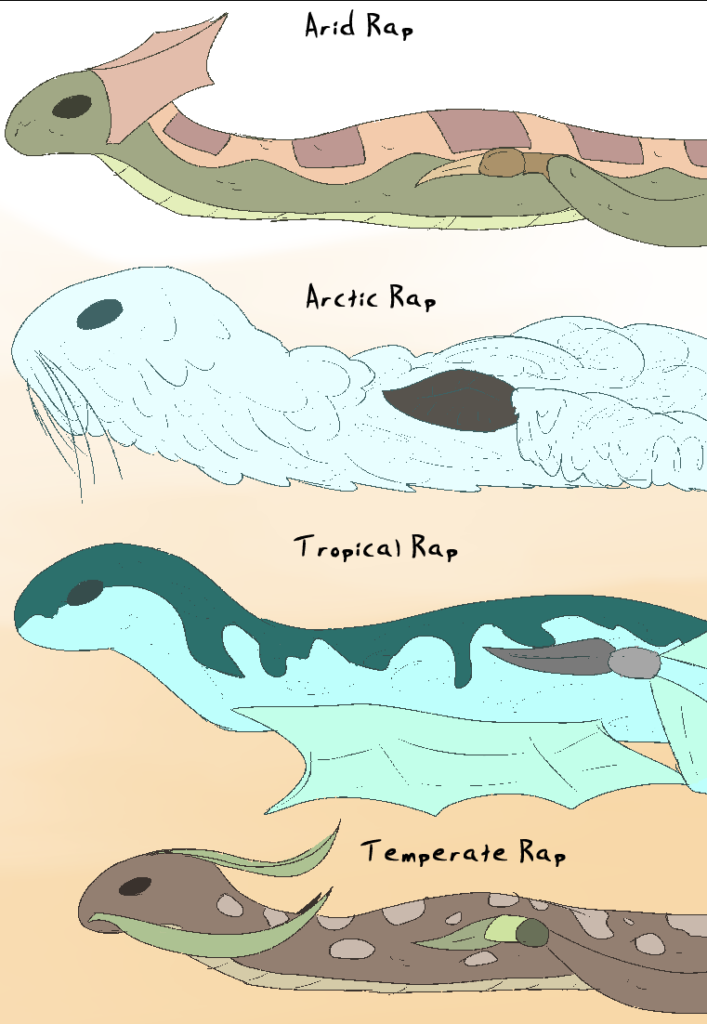
Rapsar Breeds
Arid Rapsar are the most common as the largest populations of wild rapsar hail from Western Logáu. They are scaly, with a distinct squared pattern along their back and a heat sink fin/crest on their head. Like all rapsar they are armed with a stinger for self defense that doesn’t have a venom, rather it just relies on sheer stabbing and trauma to force back predators. Arid rapsar are mostly widespread across the open reaches of Western Logáu, though can also be found often herded across the foothills of the mountains in Western Logáu.
Arctic Rapsar are a simple case. Hot blooded, furred, still very slithery snakes that are mostly associated with southern Logáu. They tend to live more off of the arctic lichens and fungi of arctic regions rather than plants specifically.
Their stinger has a gland that is known to produce and extrude fire mana. Which is often instinctively used by arctic rapsar to both warm up their rivers when they are resting and grazing, as well as to fend off predators. Most arctic rapsar can be found in nature in the Cordilleras and tundras of the DragonScape. Though of course herdrakes are known to herd them all over the south.
Tropical Rapsar are a rather strange sort, They are aquatic. They are slow moving on land and tend to rather prefer grazing coastal aquatic seaweeds and other underwater plants. Though that said they are not fish, they do need to resurface often and regularly and you can often find tropical rapsar on the beaches relaxing, as well as to lay their eggs. Often domesticating them requires a lot more intensive infrastructure than other breeds of rapsar, involving the construction of specialized tide pools. Unlike other arid and arctic breeds therefore they are not herded nomadically or seminomadically, but are a sedentarily raised animal. Tropical rapsar are almost exclusively a coastal species, swamps, marshlands, coastlines, lagoons, rivers, but mostly coastal waters
And lastly Temperate rapsar are simple, brown serpents with whiskers that help them feel around their environments. As most temperate Rapsar are associated with the central wetlands of eastern logáu or similar environments. They are often grazers of rotting plant material, wood namely but are also known to graze on reeds and other temperate wetland plants. They are perhaps the most environmentally contained as they are the least nomadic of the rapsar breeds mostly preferring to only move from one wetland to another as they exhaust the local plant supply which can sometimes take years. Making them a common staple of sedentary eastern logáu communities their stinger of course is just a dagger, unlike the arctic rapsar for protection from predators
Rapsar and Draconic Societies
Rapsar are mostly associated with the Éldimor dragons, or those dragons who descend from the remnant sivilão who rejected fim éodin and have since constructed new cultures and societies. As rapsar are not native to the Americas, the only americans to lay eyes on them are those who would go on to awake in planar such as Logáu, or other planar in which Rapsar can be found. To those dragons many societies of pastoralist drekir have built their societies around rapsar, herding them over vast territories or raising them in pins (depending on the breed). Rapsar are most importantly raised for their eggs, which they lay by the hundreds monthly, as well as their meat, both usually created in quantities that can keep entire dens fed month to month. It is also common for drekir to eat the blood as well as cook the bones of rapsar as other sources of food.
The average herd to a den of 30 drekir usually tends to range between 20-100 rapsar that they care for regularly, with around 50 being the magic number in most contexts for a den to keep fed.
In addition to food the hides of rapsar are known to be thick and easily tanned into rawhide or leather textiles that can be easily turned into clothing, bags, sacks, or in use in making shelters like tents and huts. Likewise their stingers are often used to make tools such as projectile points, knives, spears, and sewing needles.
The Sivilão remnants of planar outside of the Americas vary in their perspective of rapsar. Though most sivilão traditional doctrine has, for thousands of years, labled them as vermin that should not be eaten due to their meat being dirty. That said there are sivilão remnants who have shifted in that belief and raise their own raspar within their õfuthar as a food source for their drekir and ormer workforce.
Human colonial interaction is almost nonexistant, due to human colonialism only happening in the Americas. Though due to the phenomena of some boats sailing on farflung shores like logáu it’s not impossible. In fact a SEAC supply frigate that accidentally was scattered to Logáu, and no doubt those survivors would see and interact with drekir in Eastern Logáu that herd rapsar. Or they may hunt wild rapsar. either or!



